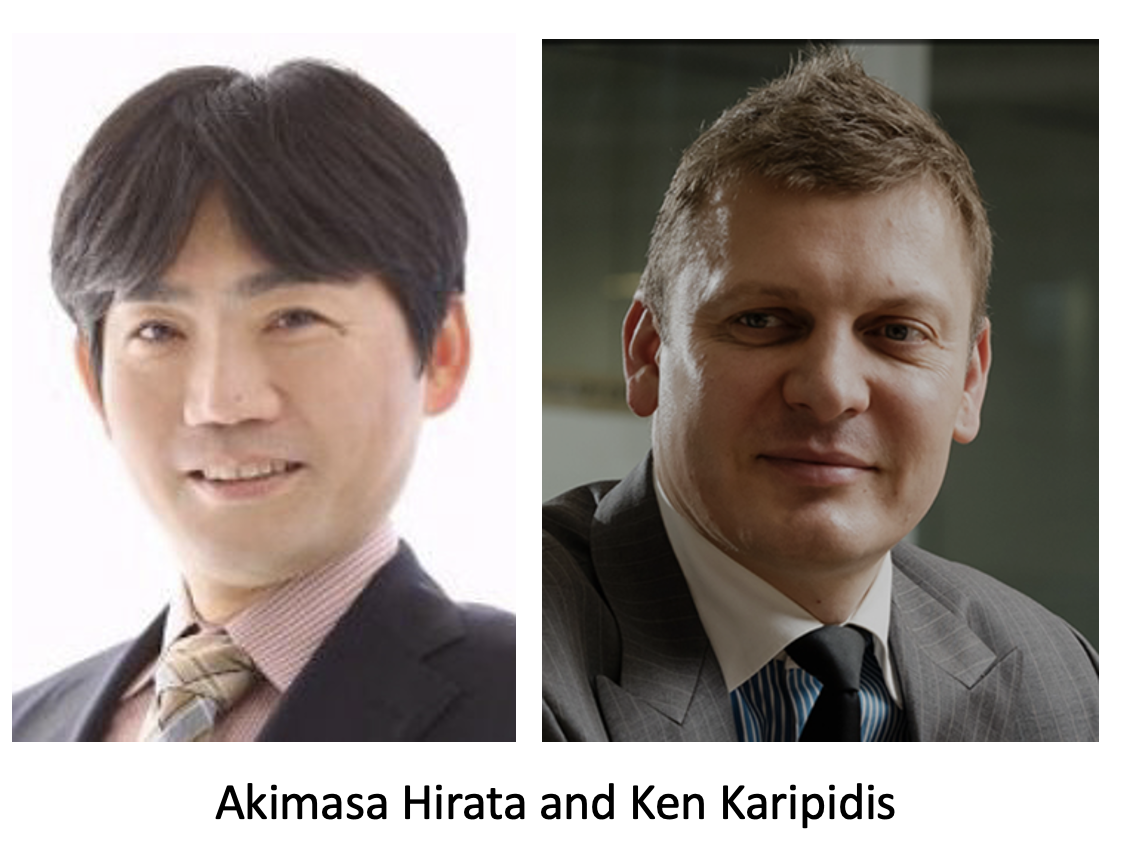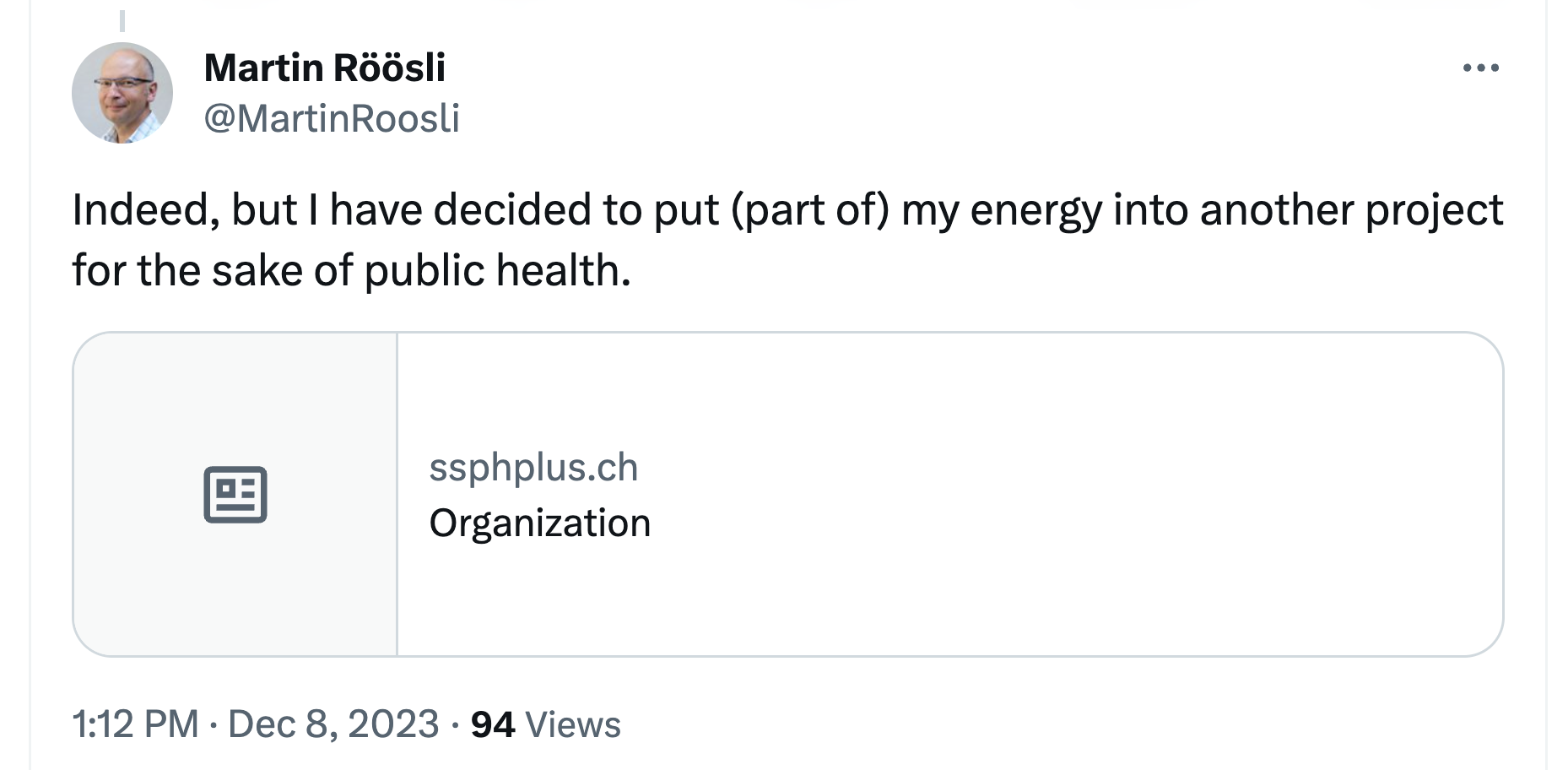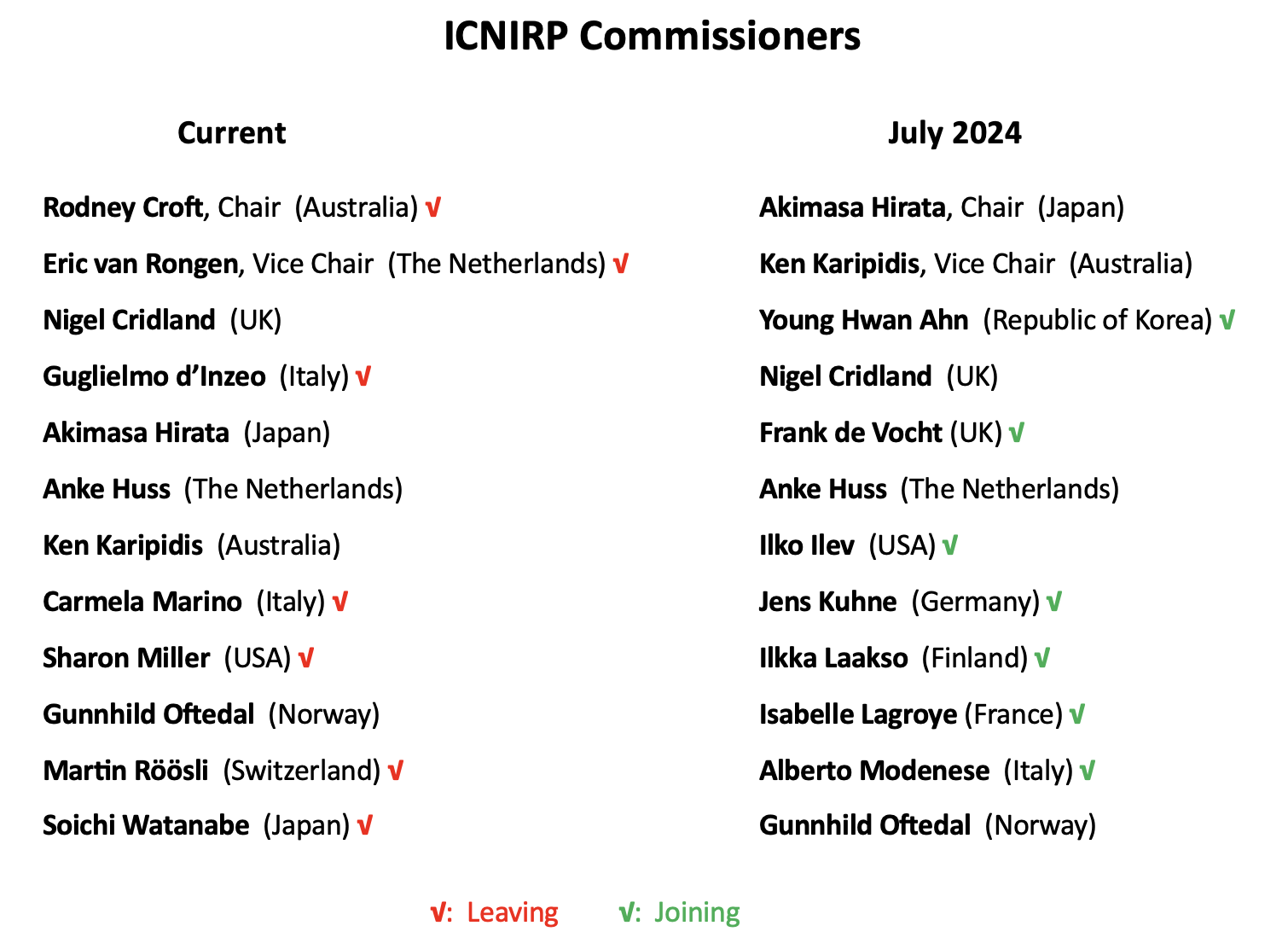ICNIRP Revamp:
Closer Ties to WHO EMF Project
Seven New Commissioners
Akimasa Hirata To Be New Leader
In November, the International Commission on Non-Ionizing Radiation Protection (ICNIRP) elected a new chair, vice chair and seven new Commissioners to join the remaining five. The new lineup takes over in mid-July 2024.
Yet, despite all the changes, ICNIRP’s outlook and policies are expected to remain much the same. While two medical doctors will be joining the Commission —there are none now— the membership will continue to be dominated by physicists and electrical engineers. ICNIRP’s entrenched thermal dogma will most likely continue to hold sway with cancer risks, and other non-thermal effects downplayed, when not dismissed outright.
Akimasa Hirata, a professor of electrical engineering at Japan’s Nagoya Institute of Technology, will be the next chairman. He has been on the Commission since 2016. Hirata replaces Australia’s Rodney Croft, a psychologist, who leaves after 12 years, the last four as ICNIRP chair. Hirata is the first person from Japan —or any other Asian country— to lead the Commission.

Ken Karipidis was elected vice chair of ICNIRP. Trained as a physicist before turning to epidemiology, Karipidis has spent the last 20-plus years at the Australian Radiation Protection and Nuclear Safety Agency (ARPANSA) in Melbourne, where he has focused on possible health effects of RF radiation.
He is perhaps best known for a 2019 analysis —carried out with Croft— which contended that cell phones are not linked to brain cancer because tumor rates have not increased as phones proliferated over the decades. Their study design was, however, heavily criticized (more here). Maria Feychting of Sweden’s Karolinska Institute, who served as ICNIRP’s vice chair from 2012 to 2020, has long made similar arguments about brain cancer rates in Europe.
Karipidis has tried to assuage public concerns over RF. In the process, he has advised against taking precautionary measures. “As a scientist the evidence is not good enough, I don’t feel the need to use the speaker or hands-free,” he told the press a few years ago. Karipidis has also said that 5G radiation is nothing to worry about.
Commissioners serve a four-year term, which, under its statutes, can be renewed no more than twice. Those elected most often remain for the full 12-year maximum, though this November, three members stepped down after only eight years: d’Inzeo, Miller and Röösli.
In a Tweet posted on “X,” Röösli advised that he was leaving to give himself more time to devote to the Swiss School of Public Health:

Russia and China which have large electromagnetic health research programs and have adopted exposure limits that are more stringent than ICNIRP’s, are not represented on the Commission.
Was anyone who does not agree with the thermal paradigm nominated? Outsiders don’t know because the ICNIRP election was kept secret.
ICNIRP Plays Major Role in WHO RF Review
The election further cements the already close relationship between ICNIRP and the WHO EMF Project in Geneva. (Much more here.) ICNIRP has long served as the Project’s de facto scientific secretariat. (Both were founded by Michael Repacholi.)
Three of the new Commissioners are members of WHO’s RF Working Group, set up last December to guide the revision of the 1993 RF Environmental Health Criteria (EHC) document, which will lay out current knowledge on RF health effects.
• Korea’s Young Hwan Ahn;
• Finland’s Ilkka Laakso; and
• Italy’s Alberto Modenese.
Ahn and Modenese are physicians; Laakso is an electrical engineer. Ahn is a member of the Japanese-Korean project to partially repeat the NTP RF-cancer study (more here).
The EHC project, which began 12 years ago, was reset in 2019 when WHO commissioned ten systematic reviews of RF health effects to guide the revision of the RF document. WHO followed a secretive process on who would write the reviews; those selected were never formally announced. Details of the teams selected have slowly dribbled out as the protocols for each review are published. (Two of the reviews have been published; the others are still ongoing or are in press.)
To no one’s surprise, nine of the ten teams include past or current ICNIRP commissioners and/or scientific experts. (The tenth has not yet been revealed.) Several are on multiple teams: For instance, Röösli is working on three reviews, and Feychting on four. Karipidis is on two teams, as is Andrew Wood of Swinburne University of Technology in Melbourne, one of Karipidis’s frequent collaborators.
Wood was an ICNIRP scientific expert from 2013 to 2020 and was recently reappointed. Over the last few years, he and Karipidis have published a number of papers together.
The team tackling RF cancer risks —one of the most important of the ten systematic reviews— includes Feychting, Karipidis and Röösli.
(Joel Moskowitz of Berkeley Public Health has put together a list of the WHO teams working on the RF systematic reviews on his blog, Electromagnetic Safety.)
BfS Physicist Joins ICNIRP
Come July, the German Federal Office of Radiation Protection (BfS), by far the largest financial supporter of ICNIRP, will be formally represented on the Commission. Jens Kuhne, a BfS physicist who specializes in electromagnetic and ultrasound dosimetry, will step up from his current role as an ICNIRP science advisor to become a full member of the Commission.
Kuhne is working on two of the WHO systematic review teams: the one on human cognitive performance and another on biomarkers of oxidative stress.
In 2020, Kuhne was a the lead author of a BfS letter to the journal Bioelectromagnetics which argued that the results of the U.S. NTP RF-animal study, which was deemed to show “clear evidence” of cancer causation, might be explained as being due to “excessive thermoregulatory stress.” (This is in line with a 2018 ICNIRP opinion which maintained that the NTP and the Ramazzini animal study do not “provide evidence” that RF radiation is carcinogenic.)
ARPANSA Support for WHO EHC Project
In early November, a couple of weeks before Karipidis was elected vice chair of ICNIRP, ARPANSA’s chief radiation health scientist, Ray Tinker, announced that his Agency would contribute A$150,000 (~US$100,000) to support WHO’s work on the RF EHC document.
“As a member nation, the Australian Government supports the WHO’s independent assessment of all the scientific evidence on this topic,” he stated.
The only American elected to ICNIRP is Ilko Ilev, who works for FDA’s Center for Devices and Radiological Health (CDRH), outside Washington. Trained in Bulgaria, Ilev is an expert in laser physics and technology. He replaces CDRH’s Sharon Miller, who works on UV radiation.
Another new member of the Commission is France’s Isabelle Lagroye of the University of Bordeaux. She is a long-time associate of Bernard Veyret, who was on ICNIRP from 2000 to 2012.
The seventh new Commissioner is Frank de Vocht, an epidemiologist at UK’s University of Bristol.

